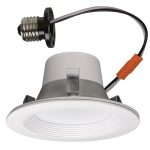Why LED Light Bulbs Flicker: Signs of Burning Out and How to Prevent It
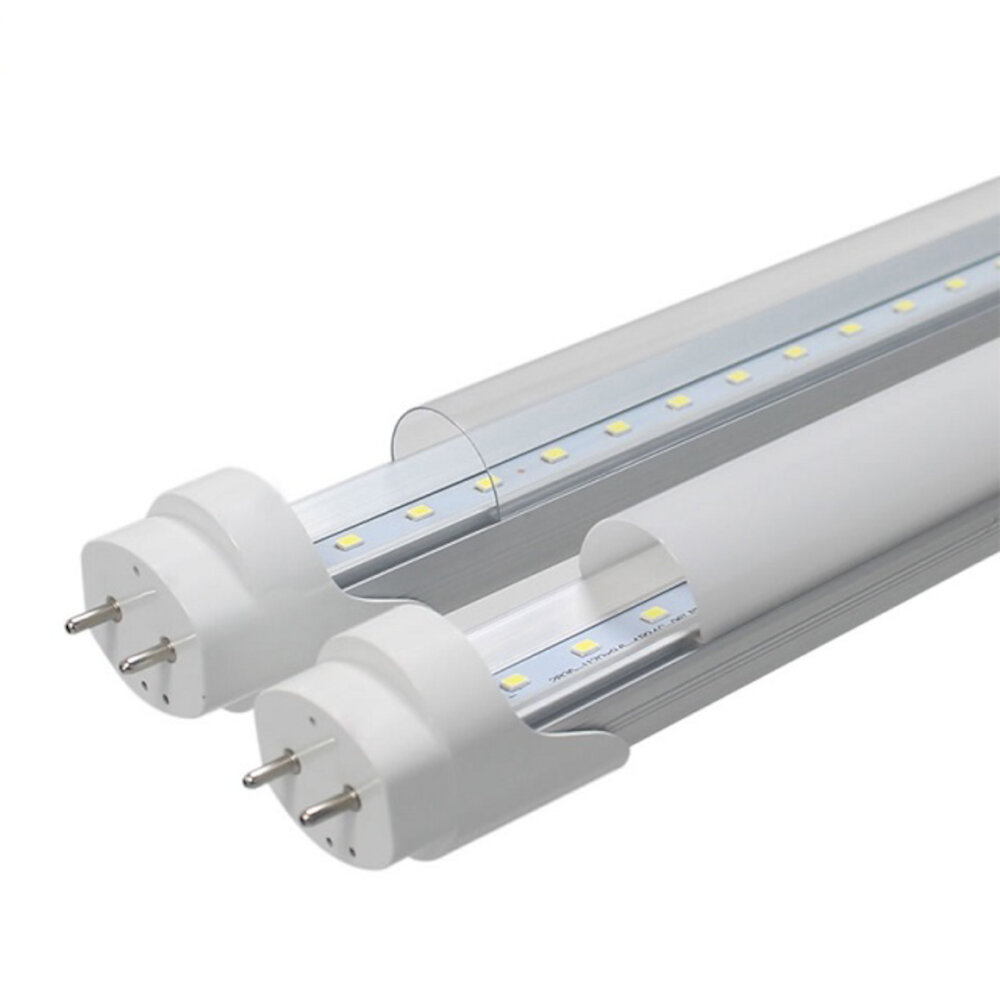
LED light bulbs are rapidly becoming the preferred lighting option for many households and businesses due to their energy efficiency, long lifespan, and affordability. They provide bright, clean light that can last for many years, making them an excellent choice for both indoor and outdoor lighting. However, like all light bulbs, LED bulbs can flicker, which can be a sign of burning out. This issue can be frustrating, and it is important to understand why it happens and how to prevent it. Flickering LED bulbs can be caused by several factors, including voltage fluctuations, outdated or incompatible dimmer switches, and poor quality bulbs. These issues can cause the bulb to flicker or even fail entirely, resulting in the need for a replacement. Understanding the signs of a burning out LED bulb and how to prevent it can help you save money and avoid the inconvenience of frequent bulb replacements. In this article, we will explore the common causes of flickering LED bulbs, the signs of a burning out LED bulb, and how to prevent this from happening in the first place.
LED light bulbs, or light-emitting diodes, are a type of energy-efficient lighting that is rapidly replacing traditional incandescent bulbs. They work by using a semiconductor to convert electricity into light, which makes them much more energy-efficient than other types of lighting. One of the primary benefits of LED bulbs is their longevity; they can last up to 25,000 hours, or 25 times longer than traditional bulbs. Additionally, they produce very little heat, making them a safer option for homes and businesses. LED bulbs also come in a variety of colors and can be dimmed, making them a versatile lighting option for any space.
Flickering in LED light bulbs is an issue that can be caused by a variety of factors. One of the most common causes is the use of incompatible dimmer switches, which can result in an irregular flow of electricity and cause the LED bulb to flicker. Another cause can be the use of low-quality LED bulbs, which may have poor internal components that can lead to flickering. Additionally, voltage fluctuations, loose wiring connections, or power supply issues can also cause flickering. It is important to address flickering in LED bulbs promptly, as it can be a sign of burning out and can reduce the lifespan of the bulb. By identifying the cause of the flickering and taking appropriate measures to prevent it, users can enjoy the benefits of LED lighting for longer periods.
Signs of LED Light Bulbs Burning Out
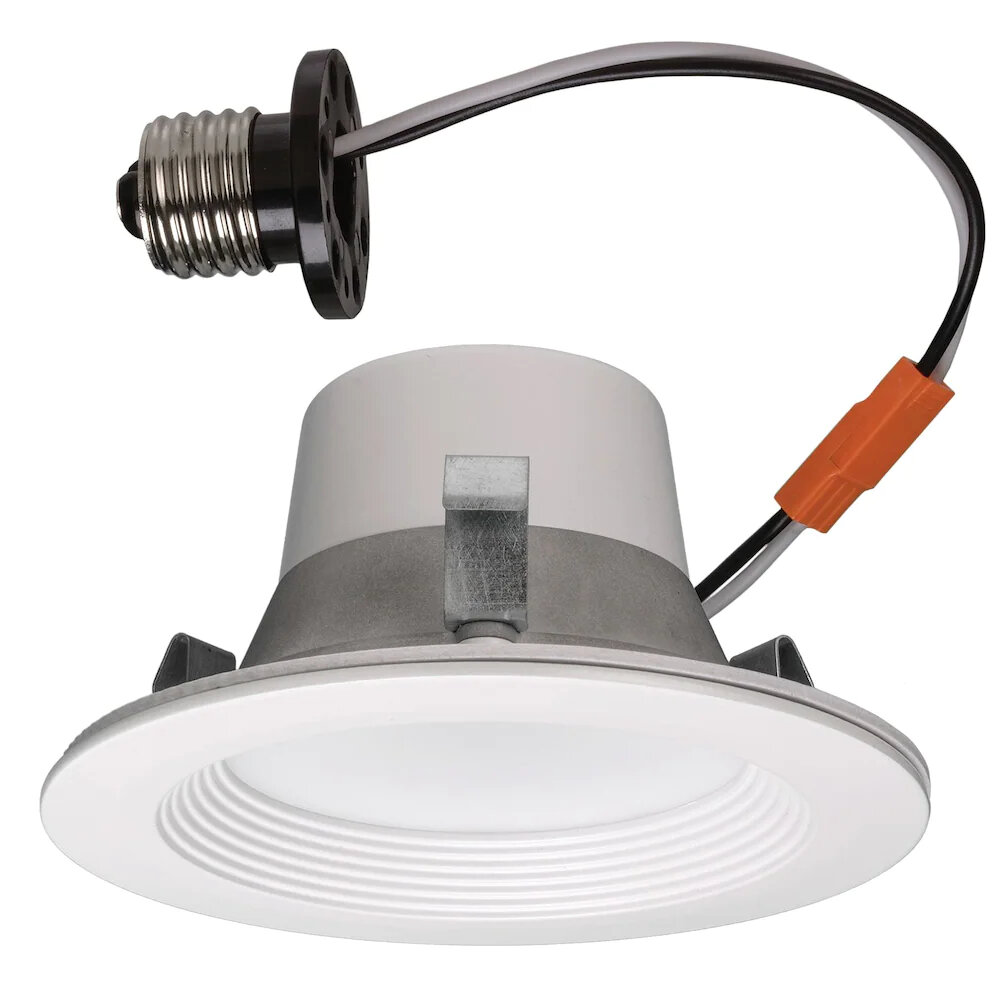
LED light bulbs have been widely used in homes and businesses because of their energy efficiency and longevity. However, just like any other light bulb, LED lights can also burn out over time. One of the signs of a burning LED light bulb is flickering. A flickering LED light bulb is caused by the bulb’s driver circuitry, which is responsible for regulating the current flowing through the bulb. When the driver circuitry fails, the LED light bulb will start to flicker, indicating that it is burning out. Another sign of an LED light bulb burning out is a decrease in light output. LED light bulbs are known for their brightness, but over time, their brightness can start to decrease. This is usually caused by the LED chips inside the bulb starting to degrade. As the chips degrade, the bulb will produce less light, and the color temperature of the light may also change. If you notice that your LED light bulb is not as bright as it used to be, it may be a sign that it is burning out and needs to be replaced.
Flickering or flashing lights can be a source of annoyance and discomfort for many people. In the case of LED light bulbs, flickering can be a sign that the bulb is burning out. This is because LED bulbs are designed to gradually dim over time, rather than suddenly burning out like traditional incandescent bulbs. The flickering can also be caused by a faulty or incompatible dimmer switch. To prevent flickering and prolong the life of your LED bulbs, it is important to use the correct dimmer switch and avoid overloading circuits. Additionally, purchasing high-quality LED bulbs from reputable brands can also reduce the risk of flickering and ensure a longer lifespan for your bulbs.
Dimming of lights is a common phenomenon observed in LED light bulbs, which can signal the onset of burning out. This flickering can be caused due to a range of reasons, such as voltage fluctuations, electrical interference, or compatibility issues with dimmer switches. The flickering effect can be bothersome and cause eyestrain, headaches, and even seizures in some individuals. It is crucial to identify the root cause of flickering and take measures to prevent it, such as using a compatible dimmer switch or voltage regulator or replacing the bulb altogether. By taking appropriate measures, the lifespan and performance of your LED bulbs can be significantly improved, ensuring a reliable and consistent source of lighting for your home or office.
Discoloration of light can occur when an LED light bulb is flickering or burning out. This phenomenon is caused by the degradation of the phosphor coating on the LED chip, which can cause a shift in the color temperature of the light produced. As the phosphor coating deteriorates, the light emitted by the LED can become more blue or more yellow, depending on the type of phosphor used. This discoloration can be a sign that the LED bulb is nearing the end of its lifespan and should be replaced to prevent further damage or failure. Additionally, it is important to choose high-quality LED bulbs with reliable phosphor coatings to prevent premature discoloration and ensure consistent, high-quality lighting.
Inconsistent lighting can be a frustrating issue for many people, and it is often caused by a problem with the LED light bulb. When the bulb starts to flicker, it may indicate that it is burning out, which can be a safety hazard. In addition, inconsistent lighting can be a sign that the LED bulb is not compatible with the dimmer switch or that there is an issue with the electrical wiring in the house. To prevent this issue, it is important to choose high-quality LED bulbs that are compatible with your dimmer switch and to have a professional electrician inspect your home’s electrical system on a regular basis. By taking these steps, you can ensure that your lighting is consistent and safe for years to come.
Causes of LED Light Bulbs Flickering
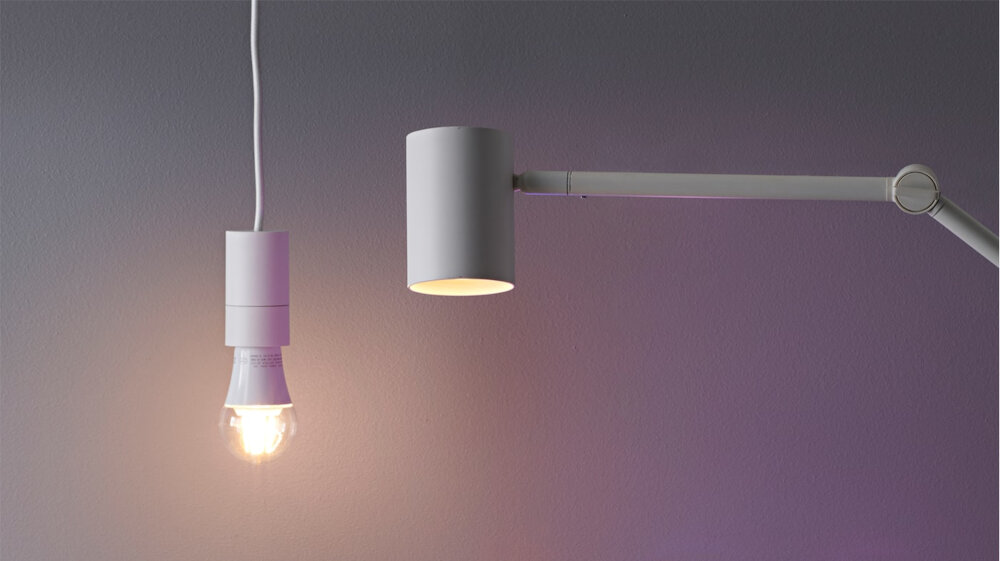
LED light bulbs have become increasingly popular in recent years due to their energy efficiency and long lifespan. However, one common issue that many people experience with LED bulbs is flickering. There are several causes of LED light bulb flickering, including voltage fluctuations, incompatible dimmer switches, and faulty wiring. Voltage fluctuations can cause flickering in LED bulbs because they require a certain amount of voltage to function properly. If the voltage is too high or too low, the bulb may flicker or fail altogether. Incompatible dimmer switches can also cause flickering in LED bulbs because they are designed for use with incandescent bulbs, which require a different amount of power to operate. If the dimmer switch is not compatible with the LED bulb, it can cause flickering or even damage the bulb over time. Faulty wiring can also cause flickering in LED bulbs, as loose or damaged wiring can cause voltage fluctuations that affect the bulb’s performance. To prevent LED light bulbs from flickering, it is important to use high-quality bulbs that are designed for the specific application. It is also important to ensure that the wiring in the lighting fixture is properly installed and functioning correctly. If flickering persists, it may be necessary to replace the dimmer switch with one that is designed for use with LED bulbs. Additionally, it is important to avoid using LED bulbs in fixtures that are not designed for them, as this can cause voltage fluctuations that can damage the bulb or cause it to flicker. By taking these steps, it is possible to prevent LED light bulbs from flickering and ensure that they provide reliable and efficient lighting for years to come.
Voltage fluctuations are one of the primary causes of LED light bulbs flickering or burning out. These fluctuations are a common occurrence in our daily lives, and they can be caused by a variety of factors such as power grid instability, electrical storms, and power surges. When the voltage supply to an LED bulb is unstable, it can cause the bulb to flicker, dim, or even shut off completely. Additionally, these fluctuations can also cause the LED bulb to overheat, which can lead to premature failure. Therefore, it is important to take preventive measures such as using voltage stabilizers, surge protectors, and high-quality LED bulbs to avoid voltage fluctuations and ensure the longevity of your lighting fixtures.
Incompatible dimmer switches can cause LED light bulbs to flicker, which can be a sign of the bulbs burning out. This is because traditional dimmer switches are designed to work with incandescent bulbs that require a higher level of electrical current to operate. However, LED bulbs require a much lower current to operate, and as a result, the traditional dimmer switches can cause the bulbs to flicker or even stop working altogether. To prevent this, it is important to use a dimmer switch that is specifically designed to work with LED bulbs, as these switches can regulate the lower electrical current required by the bulbs and prevent any flickering or burning out.
Overheating is a common issue that can cause LED light bulbs to flicker and eventually burn out. When the bulb gets too hot, it can damage the internal components, including the driver and the diodes. This can also cause the plastic housing to melt, which can be a fire hazard. Overheating can be caused by a variety of factors, such as using the wrong type of bulb in a particular fixture, having too many bulbs in a small space, or using a bulb with a higher wattage than what the fixture is rated for. To prevent overheating, it is important to choose the correct bulb for your fixture, ensure proper ventilation, and avoid overcrowding.
Manufacturing defects can be a major cause of LED light bulbs flickering or burning out prematurely. These defects may include poor soldering, faulty components or incorrect assembly of the bulb. In addition, environmental factors such as temperature fluctuations and humidity can also contribute to these issues. Manufacturers can help prevent these defects by implementing strict quality control measures during the manufacturing process, including testing and inspection of every bulb before it is sold to consumers. Consumers can also take steps to prevent premature failure of their LED bulbs by ensuring they are installed correctly and used in appropriate conditions. Ultimately, addressing manufacturing defects is crucial for ensuring the longevity and reliability of LED light bulbs.
The aging of LED components is a natural process that occurs over time due to various factors such as high temperatures, humidity, and voltage fluctuations. As the components age, the brightness of the LED light bulbs can decrease, and they may start to flicker or even fail completely. This is because the phosphor coating on the LED chip can deteriorate, causing a reduction in light output. Additionally, the electronic components that regulate the voltage and current to the LED can also degrade, leading to flickering or other issues. To prevent premature aging and ensure the longevity of LED light bulbs, it is important to use high-quality components and avoid exposing them to extreme temperatures or moisture.
How to Prevent LED Light Bulbs Flickering

LED light bulbs are known for their energy-saving benefits and long lifespan. However, one of the most common issues with LED bulbs is flickering, which can be frustrating and may indicate that the bulb is burning out. There are several reasons why LED bulbs flicker, including voltage fluctuations, incompatible dimmer switches, and poor connections. To prevent LED light bulbs from flickering, it is essential to identify and address the root cause of the problem. One of the most effective ways to prevent LED light bulbs from flickering is to ensure that they are compatible with the dimmer switch. Not all LED bulbs are designed to work with every type of dimmer switch, and using an incompatible dimmer can cause flickering. It is essential to check the bulb’s packaging to ensure that it is compatible with the dimmer switch being used. If the bulb is not compatible, it is recommended to switch to a dimmer switch that is designed for LED bulbs. Additionally, it is important to ensure that the dimmer switch is properly installed, as poor connections can also cause flickering.
When it comes to selecting light bulbs for your home, there are several factors to consider, but the most important one is the quality of the bulb. High-quality LED light bulbs are a great option as they provide a range of benefits such as energy efficiency, longevity, and durability. Not only do they consume less energy and last longer than traditional bulbs, but they also offer a significant reduction in carbon footprint. However, it is essential to ensure that the LED bulbs you choose are of high quality, as low-quality bulbs can flicker and burn out quickly, leading to a waste of time and money. By investing in high-quality LED bulbs, you can enjoy long-lasting, energy-efficient, and flicker-free lighting in your home.
When choosing LED light bulbs, it’s essential to check for compatibility with dimmer switches. Not all LED bulbs are compatible with dimmer switches, and using the wrong bulb can lead to flickering, buzzing, and even damage to the bulb. Dimmer switches work by reducing the amount of current flowing to the bulb, which can cause some LED bulbs to flicker or fail to light up altogether. It’s crucial to look for LED bulbs that are labeled as \dimmable\ and to ensure that they are compatible with the specific dimmer switch you plan to use. By choosing the right LED bulb, you can enjoy the benefits of energy-efficient lighting without the annoyance of flickering or the hassle of premature burnout.
The use of voltage stabilizers is an effective method to prevent flickering of LED light bulbs, which is often a sign of the bulbs burning out. These devices regulate the voltage supplied to the light bulbs, ensuring a constant flow of electricity and preventing voltage fluctuations that can cause flickering. Voltage stabilizers are particularly useful in areas with unstable power supply or when using multiple appliances on the same circuit. They come in various sizes and capacities to suit different needs, and can be easily installed between the power source and the LED light bulbs. By using voltage stabilizers, users can not only prevent flickering and extend the lifespan of their LED light bulbs, but also save on electricity bills in the long run.
Overheating is one of the leading causes of LED light bulb failure, and it can lead to flickering and eventual burning out. To avoid this, it’s essential to ensure proper ventilation around the light bulb. This means not installing the bulb in an enclosed fixture or a location where there’s little to no airflow. Additionally, it’s crucial to avoid overloading the fixture with too many bulbs or using bulbs with wattages that exceed the fixture’s recommended rating. By taking these precautions, you can extend the lifespan of your LED bulbs and avoid the frustration of flickering or burnt-out lights.
As LED components age, they can begin to flicker and show signs of burning out. This can be due to a variety of reasons, including overheating, power surges, or simply reaching the end of their lifespan. To prevent this from happening, it is important to replace aging LED components before they fail completely. This can involve replacing individual components or entire light bulbs, depending on the severity of the issue. By keeping your LED lighting system well-maintained and up-to-date, you can ensure that it continues to provide reliable and efficient illumination for years to come.
Regular maintenance of light bulbs and fixtures can prevent flickering and extend their lifespan. LED light bulbs are a popular choice due to their energy efficiency and long-lasting nature, but they can still burn out over time. Flickering is often a sign that the bulb is nearing the end of its life or that there is an issue with the fixture itself. To prevent this, it is essential to keep the bulbs and fixtures clean and free of debris. Additionally, regularly checking for loose connections and replacing bulbs as needed can help avoid the frustration of flickering or completely burnt out lights. Overall, proper maintenance of light bulbs and fixtures is crucial for ensuring their longevity and avoiding unnecessary expenses.
LED light bulb flickering can be caused by a variety of factors, including incompatible dimmer switches, voltage fluctuations, loose wiring or connections, and even the bulb’s age. The flickering can lead to annoyance or discomfort for people, and it can also indicate that the bulb is burning out. To prevent flickering, it is recommended to use compatible dimmer switches, ensure stable voltage supply, and check for any loose connections or wiring. It is also important to purchase high-quality LED bulbs from reputable brands, and to replace any aging bulbs before they burn out completely. By taking these measures, individuals can enjoy the benefits of LED lighting without the inconvenience of flickering or the added expense of frequent bulb replacement.
Proper maintenance is crucial to ensure that LED light bulbs last for a long time. These bulbs are designed to be energy-efficient, long-lasting, and durable. However, like any other electrical device, they need to be taken care of to prevent flickering, dimming, or even burning out. Simple steps like cleaning the bulbs regularly, avoiding overheating, and using the right type of dimmer can extend the life of LED light bulbs. Additionally, it is important to monitor the voltage and ensure that the wiring is in good condition. By taking these measures, you can save money on replacement costs and enjoy the benefits of LED lighting for years to come.
Conclusion
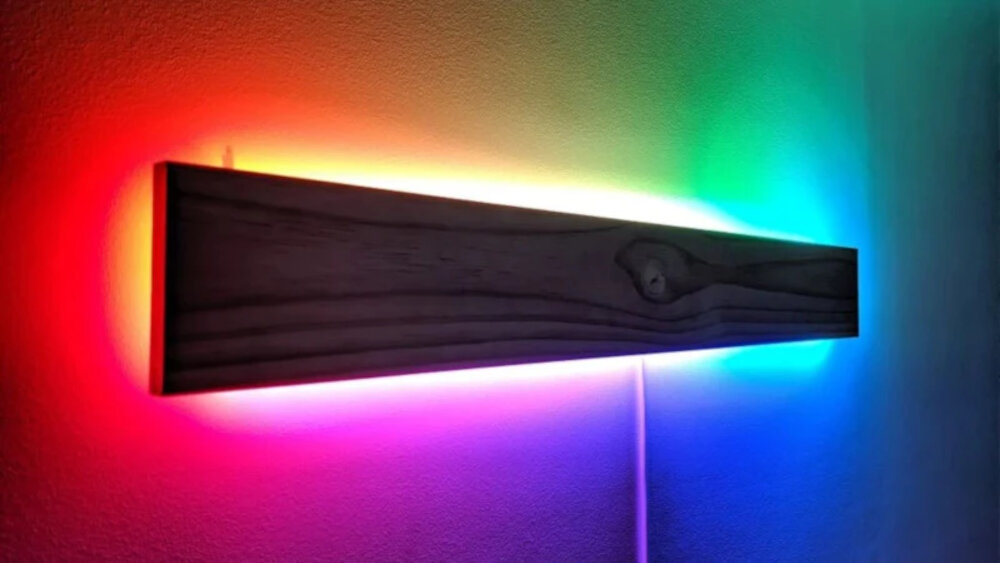
In conclusion, LED light bulbs are a great energy-efficient alternative to traditional incandescent bulbs. However, they may flicker due to various reasons such as voltage fluctuations, incompatible dimmer switches, or the bulb itself burning out. It is crucial to identify and address the underlying cause of flickering to prevent further damage and ensure optimal performance. Regular maintenance and replacement of faulty components can extend the lifespan of LED bulbs and provide reliable illumination. So, if you notice any signs of flickering, take action promptly to avoid costly repairs or replacements. Ultimately, by understanding the causes and prevention methods for LED light bulb flickering, you can enjoy long-lasting, efficient lighting in your home or workplace.


